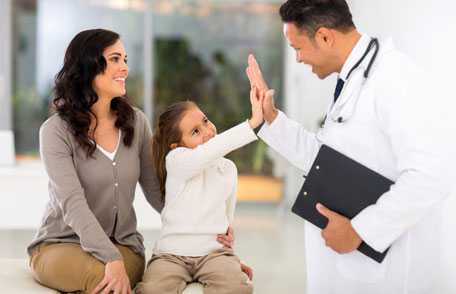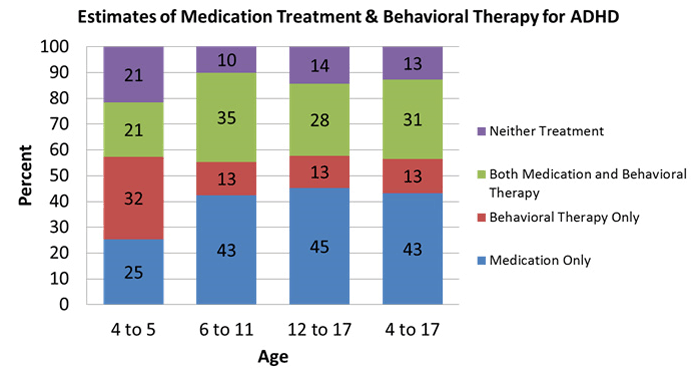Improving Children’s Behavioral Health
 Learn what CDC is doing about gaps in behavioral treatment for children.
Learn what CDC is doing about gaps in behavioral treatment for children.
It is estimated that as many as 1 out of 5 children experience a mental disorder in a given year, and an estimated $247 billion is spent each year on treatment and management of childhood mental disorders. Because of their impact on children, families, and communities, children’s mental disorders are an important public health issue.
The Centers for Disease Control and Prevention (CDC) joins the Substance Abuse and Mental Health Services Administration (SAMHSA) , along with other agencies, in learning more about strategies for integrating behavioral health with primary health care, child welfare, and education.
Childhood mental disorders
The term childhood mental disorder means all mental disorders that can be diagnosed and begin in childhood. Mental disorders among children are described as serious changes in the way children typically learn, behave, or handle their emotions. Some examples of childhood mental and behavioral disorders are:
- Attention-deficit/hyperactivity disorder (ADHD)
- Behavior disorders
- Anxiety and Depression
- Substance use disorders
- Tourette syndrome
Learn about CDC’s research on children’s mental health.
ADHD and behavioral health
CDC collaborates with partners to learn more about children’s mental health, understand the causes of mental disorders, and find and promote effective prevention and intervention strategies. ADHD is one of the most common neurobehavioral disorders of childhood. Behavioral therapy is an important form of treatment for children with ADHD.
Experts recommend that preschool children (4-5 years of age) with ADHD should receive behavioral therapy as the first line of treatment. Once children reach school age (6-17 years of age), behavioral treatment is recommended in combination with medication. Behavioral parenting interventions are a good treatment option. Read about ADHD treatment.

Most children with ADHD received either medication treatment or behavioral therapy in 2009-2010; however, many were not receiving treatment as outlined in the AAP’s best practice guidelines released in 2011.
Gaps in recommended treatment for ADHD
To find out what kind of treatments children are receiving for ADHD, CDC researchers looked at data from a national sample of children with special health care needs collected in 2009-10 and found that most children with ADHD received either medication treatment or behavioral therapy; however, many were not receiving treatment as outlined in the best practice guidelines released in 2011 by the American Academy of Pediatrics (AAP).
- Less than 1 in 3 children with ADHD received both medication treatment and behavioral therapy, which is now the preferred treatment approach for children ages 6 and older.
- Only half of preschoolers (4-5 years of age) with ADHD received behavioral therapy, which is now the recommended first-line treatment for this group.
- About half of preschoolers with ADHD were taking medication for ADHD, and about 1 in 4 were treated only with medication .
This information is a benchmark for the state of clinical practice at the time that the guidelines were published.
It gives us a greater understanding of the patterns and gaps in the treatment of ADHD and what more may need to be done to improve the quality of care for children with ADHD. Read more about this study here.
Closing the gap
CDC works with partners to learn more about any gaps in effective treatment for ADHD. CDC is working to understand the barriers that families may face when seeking behavioral treatment, and those that healthcare professionals may encounter when providing behavioral treatments or referrals. Understanding these barriers for children with ADHD will also provide insight into the barriers to effective behavioral treatment for children with other mental disorders.
- More recent data are needed to understand if the treatment patterns have become more aligned since the current guidelines were released.
- Future research and policy evaluation can help us better understand what factors and strategies increase rates of use of behavioral therapy.
- Parents should be aware that there are recommendations for behavioral treatment for children of specific ages, and that they should seek care from an experienced provider.
- Clinicians should be aware of effective behavioral treatments and resources in their community, so that they can refer children for behavioral therapy as recommended by the American Academy of Pediatrics and the American Academy of Child and Adolescent Psychiatry.
Increasing rates of behavioral therapy would increase the alignment of current and best practice, and improve the quality of care for children.
Tourette syndrome and behavioral health
Tourette syndrome (TS) is another childhood neurobehavioral disorder which causes people to have tics. Children with TS commonly have mental disorders that occur along with TS, including ADHD and obsessive-compulsive disorder . Until recently, medication has been the only real treatment option for children and adults with TS. Now there is a new treatment option that does not use medication, called Comprehensive Behavioral Intervention for Tics, or CBIT. CDC has partnered with the national Tourette Syndrome Association (TSA) to provide CBIT training for health professionals, and educational programs about CBIT for those who have TS and their families.
Mental health across the lifespan and across the globe
In addition to efforts focused on children, CDC also works on mental health issues among U.S adults, as well as among people in other countries. These activities focus on:
- health related quality of life,
- mental illness and chronic disease,
- violence prevention,
- disaster and environmental mental health,
- women’s mental health before, during, and after pregnancy,
- mental health promotion and prevention of mental illness in the community.
Read more about CDC’s work on mental health here.
Glossary
Behavioral health describes the connection between a person’s behaviors and the health and well-being of the body and mind.
Behavioral therapy is a treatment used to help change problem behaviors by building skills and helping children manage their own behaviors. Behavioral parenting interventions are one type of behavioral therapy that focuses on improving parenting skills and the relationship between parents and their child.
Mental disorders include emotional or psychiatric disorders (such as manic-depression, obsessive-compulsive disorder, and schizophrenia) or behavior disorders (such as ADHD and oppositional-defiant disorder).
Neurobehavioral means the way the brain affects emotion, behavior, and learning.
Tics are sudden twitches, movements, or sounds that people do repeatedly. People who have tics cannot stop their body from doing these things like blinking over and over again or making grunting sounds without meaning to.
More Information
More Information
- CDC Mental health
- CDC Youth Suicide Prevention
- CDC Alcohol and Public Health
- CDC Health Related Quality of Life
- CDC ADHD
- CDC Tourette Syndrome
- CDC Autism
- CDC Learn the Signs Act Early
- Substance Abuse and Mental Health Services Administration
- Health Resources and Services Administration
- American Academy of Pediatrics
- American Academy of Child and Adolescent Psychiatry
- National Resource Center on ADHD
- Tourette Association
- Page last reviewed: November 29, 2016
- Page last updated: November 29, 2016
- Content source:
- National Center on Birth Defects and Developmental Disabilities
- Page maintained by: Office of the Associate Director for Communication, Digital Media Branch, Division of Public Affairs




 ShareCompartir
ShareCompartir